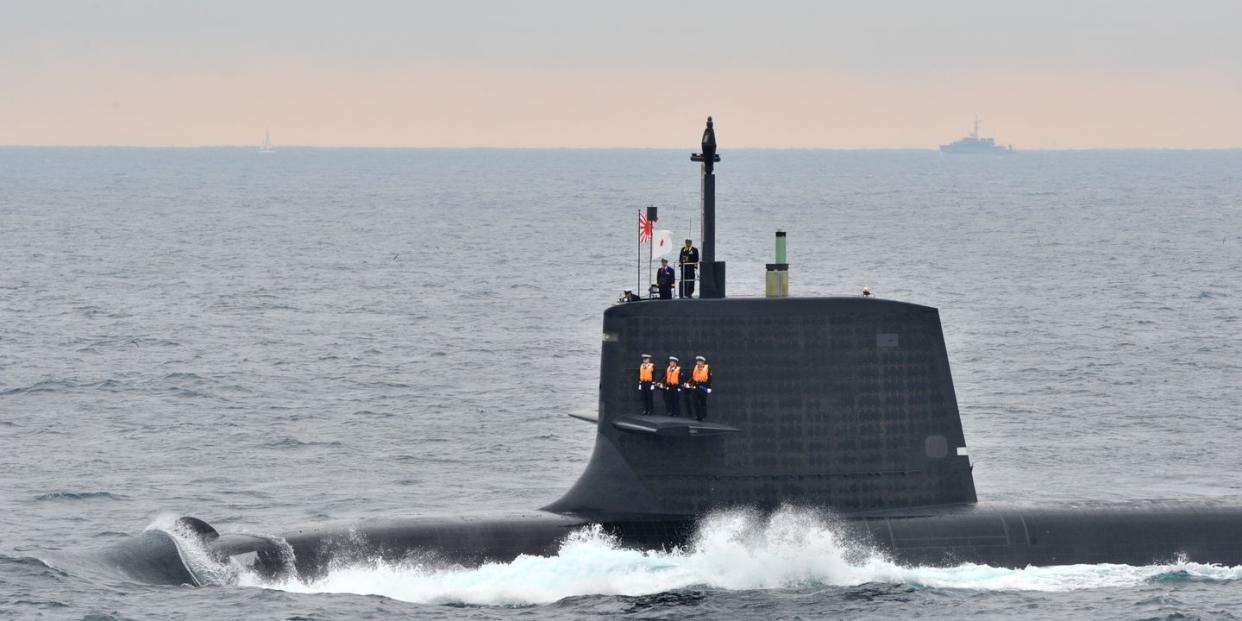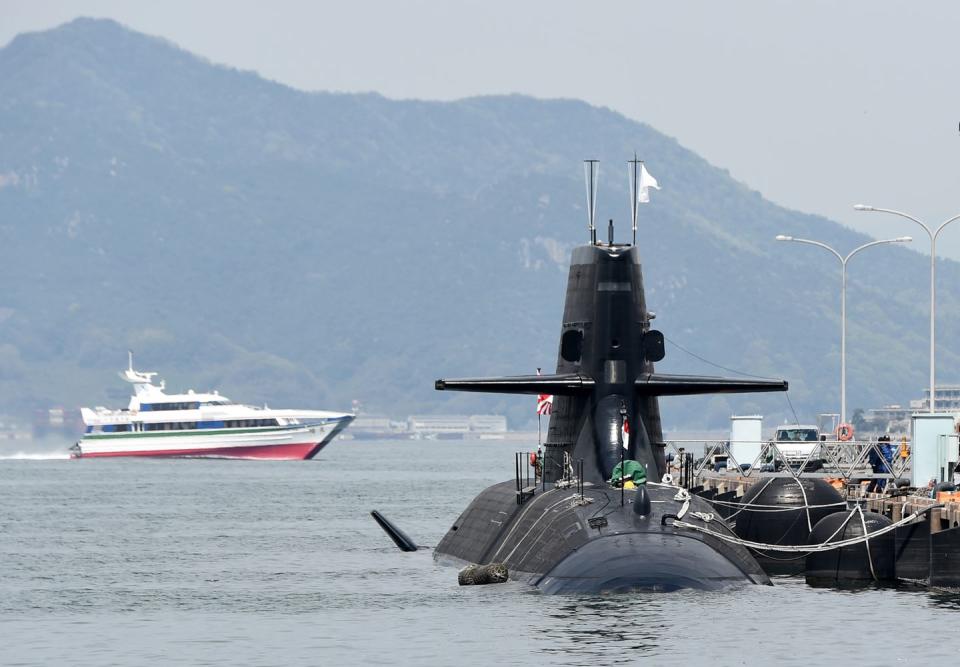Taking a Closer Look at Japan's Futuristic Attack Submarine

Japan has unveiled what is very likely the design for its next-generation attack submarine. The 29SS submarines would replace the existing Sōryū class submarines starting in the early 2030s. The futuristic undersea warship will ensure that Tokyo retains its reputation for the quietest, most modern non-nuclear submarines in the world.

One of the largest submarine powers in the world is a country that technically doesn’t even have a navy: Japan. Japan’s Maritime Self Defense Force has over twenty diesel electric submarines that are considered the finest in the world. The current Sōryū class is a large, quiet submarine equipped with extensive soundproofing, automated combat systems, and an air-independent propulsion system that allows the submarine to operate for weeks without surfacing. Last year Japan upgraded the class by installing large banks of lithium-ion batteries as a quiet source of power.
The Sōryū class is relatively young: the first sub was launched in 2009, and in many navies it’s difficult to imagine work already proceeding on a replacement. Japan however typically keeps its submarines in service for just twenty years, a relatively short time for modern warships. So it’s not exactly surprising that Mitsubishi Heavy Industries, one of Japan’s top submarine builders, has already unveiled the country’s next-generation submarine design, designated 29SS. The sub due in the late-2020s. (The designation “29SS” is derived from the 29th year of the reign of Emperor Akihito, otherwise known to everyone else as 2017, and SS is the international shorthand for non-nuclear attack submarine.)
三菱重工 海自向け新潜水艦コンセプトモデル
29SSの次世代型潜水艦として、30FFMで採用された統合コントロールシステムを潜水艦に採用。
全ての情報を艦内1箇所の大型モニターに集約し、省力化を考慮した。
従来の潜水艦と全く異なる、新コンセプトの潜水艦。 pic.twitter.com/cJ8XjBdeLS- フランカー (@kh840124) June 18, 2019
Noted submarine authority H.I. Sutton says 29SS is a "new design...based on the Sōryū class with its distinctive bow form and hull outline, but [it] differs significantly in the sail and hydroplane arrangement."
29SS retains the general hull form of earlier submarines but with some important changes. The sail is substantially reduced and blended into the hull, which should reduce hydrodynamic drag. This will make the submarine quieter, perhaps a little faster, but also more energy efficient. Non-nuclear powered submarines, operating underwater under combat conditions, must carefully manage their power or risk being forced to surface. The dive planes have also been moved from what’s left of the sail to the hull.

29SS also features a pumpjet instead of the traditional propeller for propulsion. Unlike traditional propellers, which use unshrouded blades to churn through the water, a pumpjet sucks in water and ejects it under pressure from the rear of the pumpjet. Pumpjets are quieter and more maneuverable than bare propellers and are generally used on faster, nuclear-powered submarines.
Although Japan will likely not field a nuclear-powered ship anytime soon alternate propulsion systems, such as all-electric drives, could provide a speed boost.
“After the Second World War there was a hiatus in Japanese submarine building," H.I. Sutton told Popular Mechanics. "When it resumed it was heavily influenced by American submarines, but over time Japan has gone its own way in submarine design.”
Modern Japanese submarines have a reputation for sophistication, pioneering the application of new technologies, like lithium-ion batteries.
The new submarine design focuses on improving the actual fabric of the submarine and shows that the Japanese navy will continue pushing the by building highly capable submarines which are arguably the best non-nuclear submarines in the world.

29SS will likely retain the same armament as the Sōryū boats, which consists of six bow-mounted 533-millimeter torpedo tubes. The submarine can carry up to thirty torpedo-launched weapons, a mixture of the Type 89 heavyweight torpedo and the Sub Harpoon anti-ship missile. Although there is a general trend towards installing vertical launch silos behind a submarine’s sail, Japan does not have the missiles to fill them.
The research and development phase will take place from 2025 to 2028, and the first ship of this class will probably hit the water around 2031.
Source:Covert Shores.
('You Might Also Like',)

